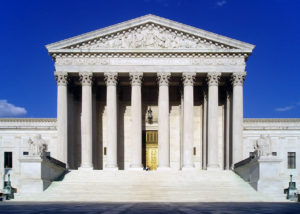 The federal Bureau of Indian Affairs reports that, nationwide in the United States, Native American children were represented in the foster care systems of their respective states at a rate that is two and a half times greater than their presence in the general population. “One of the challenges has been the courts not knowing to ask that very simple question just at the outset,” Larry Roberts, the Interior Department’s assistant secretary for Indian Affairs, said in an interview with The Associated Press. “Even though it’s a very simple question, it will make a world of difference for children and Native communities.”
The federal Bureau of Indian Affairs reports that, nationwide in the United States, Native American children were represented in the foster care systems of their respective states at a rate that is two and a half times greater than their presence in the general population. “One of the challenges has been the courts not knowing to ask that very simple question just at the outset,” Larry Roberts, the Interior Department’s assistant secretary for Indian Affairs, said in an interview with The Associated Press. “Even though it’s a very simple question, it will make a world of difference for children and Native communities.”
The question Larry Roberts is referring to is “Are you a Native American?”.
A new federal rule, announced Wednesday, June 8th of 2016, requires that every state judge across the country ask exactly that question during every single foster and adoption proceeding, but most especially when there is a reason to believe that the child is a tribal member. This regulation -due to take effect in November- is part of the Indian Child Welfare Act. This is a law that aims to place Native American children with relatives or another Native American family, rather than outside adoption or fostering. This law will also affect hearings where a child’s tribal status may determine whether or not a mother or father’s parental rights will be terminated.
The Indian Child Welfare Act was enacted in 1978 in response to the disproportionately high rates at which tribal children are removed from their homes and adopted or fostered into non-Native American homes, effectively removing them from the entire culture as a whole. Before the law, as many as 25% to 35% of all Indian children were removed from their Indian homes and cultural heritage, and placed with non-native families. If that had continued, survival of all Native American tribes would have been threatened. It was determined that, due to the differences in culture, what was in the best interest of a non-Indian child was not always the same thing as the best interests of an Indian child due to the large amount of extended-families and the tribal nature of the communities leading to many parental figures in the child’s life.
Social workers at the time defined “best interest of the child” differently, and the common Native American practice of having children cared for by extended family was viewed as abandonment by well-intentioned social workers following the guidebook. In some cases occurring in the late 1950s before the Indian Child Welfare Act, the The BIA (Bureau of Indian Affairs) paid states to remove Indian children from their homes on the basis of neglect. It was articulated in terms of providing “adoptive placement for American Indian children whose parents were deemed unable to provide a ‘suitable’ home for them.”
On the other side of the coin: “The Indian Child Welfare Act creates a separate and unequal system for Indian children,” said Timothy Sandefur, vice president for litigation at the Arizona-based Goldwater Institute. “It is more difficult to protect these children from abuse, more difficult to find them safe and stable and loving families.”
Larry Roberts said the regulation was brought about with consultation by the Justice Department and Department of Health and Human Services won final approval from Interior Department officials after many public hearing, listening sessions with tribes, and deliberation. He went on to talk about how many states adhere differently to the Indian Child Welfare Act based on the individual rights, rules, and regulations of the states, and this new federal rule will help establish more consistency.
If there is a case wherein the judge does not follow regulation, family members of the child or a tribe has the right to challenge the proceedings.
Interior Secretary Sally Jewell said after the announcement that the new rule “reflects the highest standards in child welfare.”
One relevant, and particularly high-profile adoption case in the recent past was that of Baby Veronica. To hear all about the case, and see both sides of the story, I highly recommend visiting Radiolab’s website and listening to their coverage of the story, as well as the many links to news related to the story.
